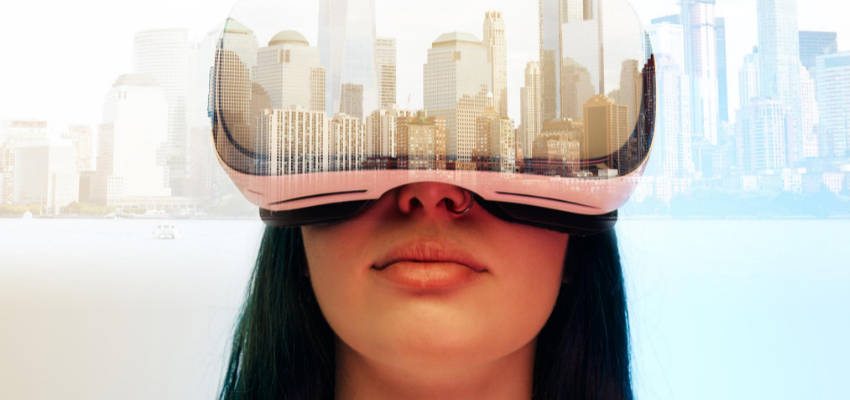Show:
Spatial Computing Unveiled: Navigating the Future of Immersive Technology
In the rapidly evolving landscape of technology, Spatial Computing has emerged as a groundbreaking paradigm, reshaping the way we interact with and perceive digital information. This comprehensive guide aims to unravel the intricacies of Spatial Computing, exploring its foundations, key components, real-world applications, and the transformative potential it holds for various industries.

I. Unveiling Spatial Computing
A. What is Spatial Computing?
Spatial Computing is a revolutionary approach to computing that goes beyond traditional two-dimensional interfaces, immersing users in a three-dimensional, interactive digital space. Unlike conventional computing, which relies on flat screens and limited interaction methods, Spatial Computing Development leverages technologies like augmented reality (AR), virtual reality (VR), and mixed reality (MR) to merge the digital and physical worlds seamlessly.
B. Core Elements
- Sensors and Cameras: Spatial Computing relies on a network of sensors and cameras to capture real-world data, creating a dynamic and responsive digital environment.
- Gesture Recognition: Users can interact with Spatial Computing systems using natural gestures, breaking free from the constraints of keyboards and mouse inputs.
- Spatial Mapping: The technology maps physical spaces in real-time, allowing digital elements to interact intelligently with the user’s environment.
II. Key Components of Spatial Computing
A. Augmented Reality (AR)
- Overlaying Digital Information: AR enhances the real-world environment by overlaying digital information onto physical surroundings, creating a seamless blend of the digital and physical realms.
- Mobile AR Applications: Spatial Computing on mobile devices enables users to interact with AR content wherever they go, from navigation assistance to immersive gaming experiences.
B. Virtual Reality (VR)
- Immersive Environments: VR creates entirely immersive digital environments, transporting users to virtual worlds for gaming, training simulations, and more.
- Applications in Training and Education: Spatial Computing’s VR applications have significant potential in training simulations and educational experiences, providing hands-on learning in a risk-free virtual space.

C. Mixed Reality (MR)
- Interacting with Digital and Physical Objects: MR combines elements of AR and VR, allowing users to interact with both digital and physical objects in the same space.
- Industrial Applications: MR is increasingly used in industries such as manufacturing, where workers can visualize and interact with digital models overlaid onto physical equipment.
III. Real-World Applications
A. Gaming and Entertainment
- Immersive Gaming Experiences: Spatial Computing is revolutionizing the gaming industry, offering immersive experiences that go beyond traditional gaming setups.
- Interactive Storytelling: Storytelling becomes more engaging with Spatial Computing, as users can actively participate in narratives through gestures and interactions.
B. Healthcare
- Surgical Simulations: Spatial Computing facilitates realistic surgical simulations, allowing medical professionals to hone their skills in a virtual environment.
- Patient Care and Rehabilitation: VR applications in patient care and rehabilitation offer therapeutic experiences, from pain distraction to motor skill improvement.
C. Architecture and Design
- Virtual Prototyping: Architects and designers use Spatial Computing to create virtual prototypes, allowing for real-time adjustments and enhancements before physical construction.
- Immersive Design Collaboration: Spatial Computing enables collaborative design sessions where team members can interact with 3D models in real-time.
IV. Spatial Computing Development Tools
A. Unity3D and Unreal Engine
Both Unity3D and Unreal Engine are powerful development platforms that support the creation of Spatial Computing applications, offering tools for VR, AR, and MR development.
B. ARKit and ARCore
ARKit (for iOS) and ARCore (for Android) are software development kits that empower developers to build AR applications, bringing Spatial Computing to mobile devices.
C. Microsoft HoloLens Development Kit
For MR applications, the Microsoft HoloLens Development Kit provides the necessary tools and resources for creating immersive mixed reality experiences.
V. Challenges and Future Outlook
A. User Acceptance and Adoption
Overcoming skepticism and ensuring widespread user acceptance remains a challenge, particularly in industries where traditional methods are deeply ingrained.
B. Technological Advancements
As technology evolves, the capabilities of Spatial Computing will expand, with improved hardware, more sophisticated sensors, and enhanced user interfaces driving further adoption.

VI. Conclusion
In conclusion, Spatial Computing is not just a technological advancement; it’s a transformative force reshaping the way we interact with and perceive digital information. As businesses across various industries increasingly integrate Spatial Computing into their workflows, the potential for innovation and efficiency is boundless. Embracing the opportunities and addressing the challenges, Spatial Computing stands at the forefront of a new era in computing, promising a future where the boundaries between the physical and digital worlds blur into a seamless and immersive experience.
FAQ
What is Spatial Computing, and how does it differ from augmented reality (AR) and virtual reality (VR)?
Explore the fundamental concepts of Spatial Computing and understand how it integrates elements of AR and VR to create immersive digital experiences.
What are the key components and technologies that power Spatial Computing?
Delve into the hardware and software innovations that enable Spatial Computing, from advanced sensors to spatial mapping technologies.
How does Spatial Computing enhance user experiences in gaming and entertainment?
Explore the applications of Spatial Computing in gaming and entertainment, highlighting the immersive and interactive experiences it brings to users.
In which industries is Spatial Computing making a significant impact, and what are some practical use cases?
Understand the versatile applications of Spatial Computing across industries, from healthcare and education to architecture and manufacturing.
What role does machine learning and computer vision play in Spatial Computing?
Explore how machine learning and computer vision contribute to spatial awareness in computing, enabling devices to understand and interact with the three-dimensional space.
How is Spatial Computing transforming healthcare, and what advancements can we expect in medical applications?
Discover the revolutionary applications of Spatial Computing in healthcare, such as surgical simulations, medical training, and patient care.
What are the emerging trends in Spatial Computing, and how will they shape the future of this technology?
Gain insights into the evolving landscape of Spatial Computing, including trends such as the integration of 5G technology and the development of more compact devices.
What challenges does Spatial Computing face, and how are these challenges being addressed?
Examine the obstacles and ethical considerations associated with Spatial Computing, and understand the measures being taken to ensure responsible development and deployment.
Can Spatial Computing be applied to smart cities and autonomous vehicles, and what benefits does it offer in these contexts?
Explore the potential applications of Spatial Computing in smart cities and autonomous vehicles, including enhanced navigation, safety, and urban planning.
How can businesses and developers implement Spatial Computing solutions, and what considerations should be taken into account?
Gain insights into the implementation process for Spatial Computing solutions, from choosing compatible devices to developing immersive content and applications for specific industries.

 Return to Previous Page
Return to Previous Page








